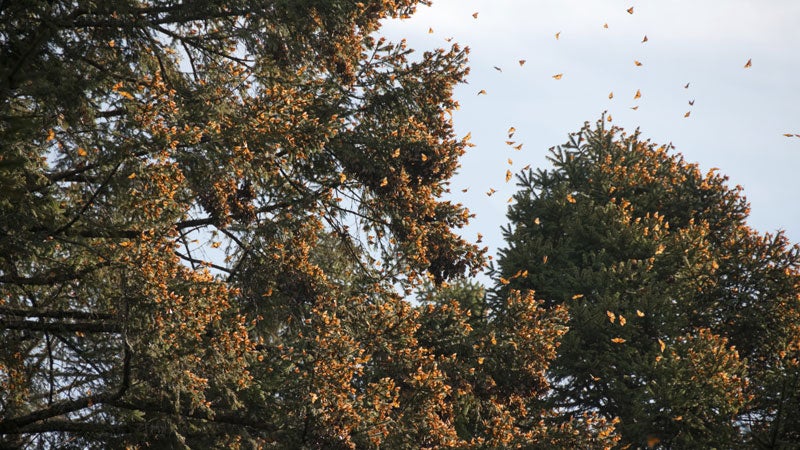Every winter, thousands of tourists flock to the Monarch Butterfly Biosphere Reserve, about 100 miles west of Mexico City, to witness the millions鈥攕ometimes hundreds of millions鈥攐f monarch butterflies that migrate there from Canada and the United States. But that natural tradition might not last for long.
As we reported in November, only three million butterflies had traveled to Mexico one month into the migration, which usually begins around November 1. This followed last winter’s record low of 60 million butterflies. Now this year’s totals are in, and they’re not promising.
This winter, only 33 million monarchs migrated to Mexico, . The butterflies occupied only 1.6 acres of forestland, a startling decline from 1996’s 20-year peak of 45 acres.
Why aren’t the monarchs migrating?
Many scientists blame the serious reduction in milkweed, the monarch’s favorite food, across the continent. , since the turn of the century, farmers have developed crops that can resist Monsanto’s Roundup weed killer鈥攎eaning that weeds like milkweed now stand a higher risk of extermination.
Karen Oberhauser, a conservation biologist at the University of Minnesota, , pointing out that when the amount of milkweed dropped by more than 80 percent, monarch egg production declined by a similar figure.
“We have this smoking gun,” Oberhauser says. “This is the only thing we’ve actually been able to correlate with decreasing monarch numbers.”
, illegal logging in the Mexican state of Michoacan has led to the destruction of the oyamel fir trees where the butterflies like to overwinter. However, efforts by the Mexican government have slowed the rate of deforestation.
Higher temperatures have also put a dent in monarch numbers, because eggs dry out in hot, arid climates, making them less viable.
The monarchs’ two-month journey can reach up to 2,800 miles and is the second-longest migration of known insects. This isn’t the first time migration has dropped. Oberhauser notes that during the drought years of the 1930s, monarch numbers might’ve been even lower than they are now. She links monarch fertility to the rebound鈥攁 female monarch can lay as many as 1,000 eggs in her lifetime.
To protect the butterflies, Omar Vidal, director of the WWF’s Mexico office, has called on leaders from Mexico, Canada, and the United States to develop a preservation strategy.


